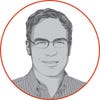
How do you feel about your commodity association? Not long after he got back to Brazil from the Commodity Classic in San Antonio, farmer-leader Glauber Silveira shared some thoughts on the two countries’ associations and their farming situations.
Aside from the work involved with his soybean, corn and eucalyptus farm up in western Mato Grosso, Silveira, after all, is vice-president of Abramilho, the Brazilian Corn Producers Association, and he was looking to hear from U.S. corn producers about what they’re doing in terms of government policy, biotech, and agronomic issues—and about prioritizing efforts among those areas. He’s also a leader with the Brazilian Soybean Association, and took advantage of the opportunity to talk with U.S. producers and leadership about some of the same issues surrounding beans.
Learning opportunity
So I asked him what the two countries’ producers—and their representative organizations-- can learn from one another. “The Brazilian producer has learned a lot from the U.S. producer in terms of focus (and) organization. They’re very pragmatic, which is why over the past ten years we’ve seen a great adoption of their associations’ style of organization. After all, they’ve been set up in organizations for 100 years.”
Silveira also gives U.S. commodity groups a lot of credit for their frequent rotation of leadership so that strong association leaders don’t end up becoming mini dictators. At the same time, he points that the typical U.S. ag group policy of drawing heavily on the experience of past presidents makes a lot of sense.
Of course, the learning goes two ways, Silveira indicates. “Brazilian farmers,” he says, “are creative and are strong on research. In Brazil, we have to live with so much adverse weather due to the tropical climate. The Brazilian producer manages to always do more with less.”
More cooperation?
It would have been unthinkable to have Brazilian farmers talking strategy, policy and organization at the first U.S. commodity meetings I attended. But, like it or not, world soy and corn producers are recognizing they’re all in the same boat, and that this kind of exchange and cooperation is inevitable. And the development of groups like the International Soybean Growers Alliance —made up of Argentina, Brazil, Canada, Paraguay, the United States and Uruguay—are proof.
The opinions of the author are not necessarily those of Farm Futures or Penton Agriculture.
About the Author(s)
You May Also Like






